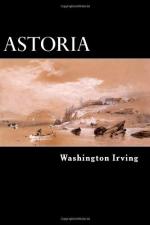The Cathlamets lived opposite to the lower village of the Wahkiacums, and numbered ninety-four warriors.
These four tribes, or rather clans, have every appearance of springing from the same origin, resembling each other in person, dress, language, and manners. They are rather a diminutive race, generally below five feet five inches, with crooked legs and thick ankles—a deformity caused by their passing so much of their time sitting or squatting upon the calves of their legs and their heels, in the bottom of their canoes—a favorite position, which they retain, even when on shore. The women increase the deformity by wearing tight bandages round the ankles, which prevent the circulation of the blood, and cause a swelling of the muscles of the leg.
Neither sex can boast of personal beauty. Their faces are round, with small but animated eyes. Their noses are broad and flat at top, and fleshy at the end, with large nostrils. They have wide mouths, thick lips, and short, irregular and dirty teeth. Indeed good teeth are seldom to be seen among the tribes west of the Rocky Mountains, who live simply on fish.
In the early stages of their intercourse with white men, these savages were but scantily clad. In summer time the men went entirely naked; in the winter and in bad weather the men wore a small robe, reaching to the middle of the thigh, made of the skins of animals, or of the wool of the mountain sheep. Occasionally, they wore a kind of mantle of matting, to keep off the rain but, having thus protected the back and shoulders, they left the rest of the body naked.
The women wore similar robes, though shorter, not reaching below the waist; besides which, they had a kind of petticoat, or fringe, reaching from the waist to the knee, formed of the fibres of cedar bark, broken into strands, or a tissue of silk grass twisted and knotted at the ends. This was the usual dress of the women in summer; should the weather be inclement, they added a vest of skins, similar to the robe.
The men carefully eradicated every vestige of a beard, considering it a great deformity. They looked with disgust at the whiskers and well-furnished chins of the white men, and in derision called them Long-beards. Both sexes, on the other hand, cherished the hair of the head, which with them is generally black and rather coarse. They allowed it to grow to a great length and were very proud and careful of it, sometimes wearing it plaited, sometimes wound round the head in fanciful tresses. No greater affront could be offered to them than to cut off their treasured locks.
They had conical hats with narrow rims, neatly woven of bear grass or of the fibres of cedar bark, interwoven with designs of various shapes and colors; sometimes merely squares and triangles, at other times rude representations of canoes, with men fishing and harpooning. These hats were nearly waterproof, and extremely durable.




